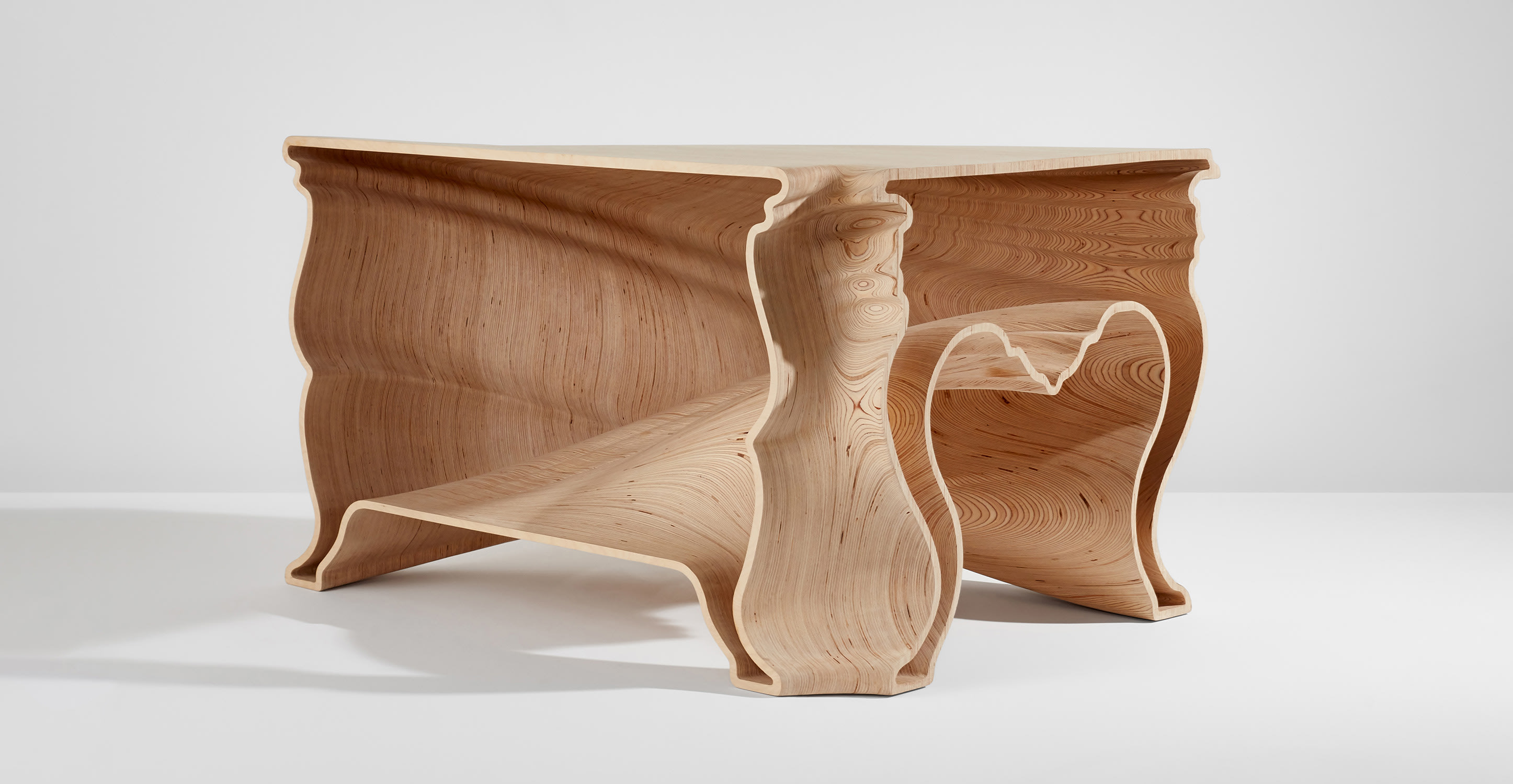

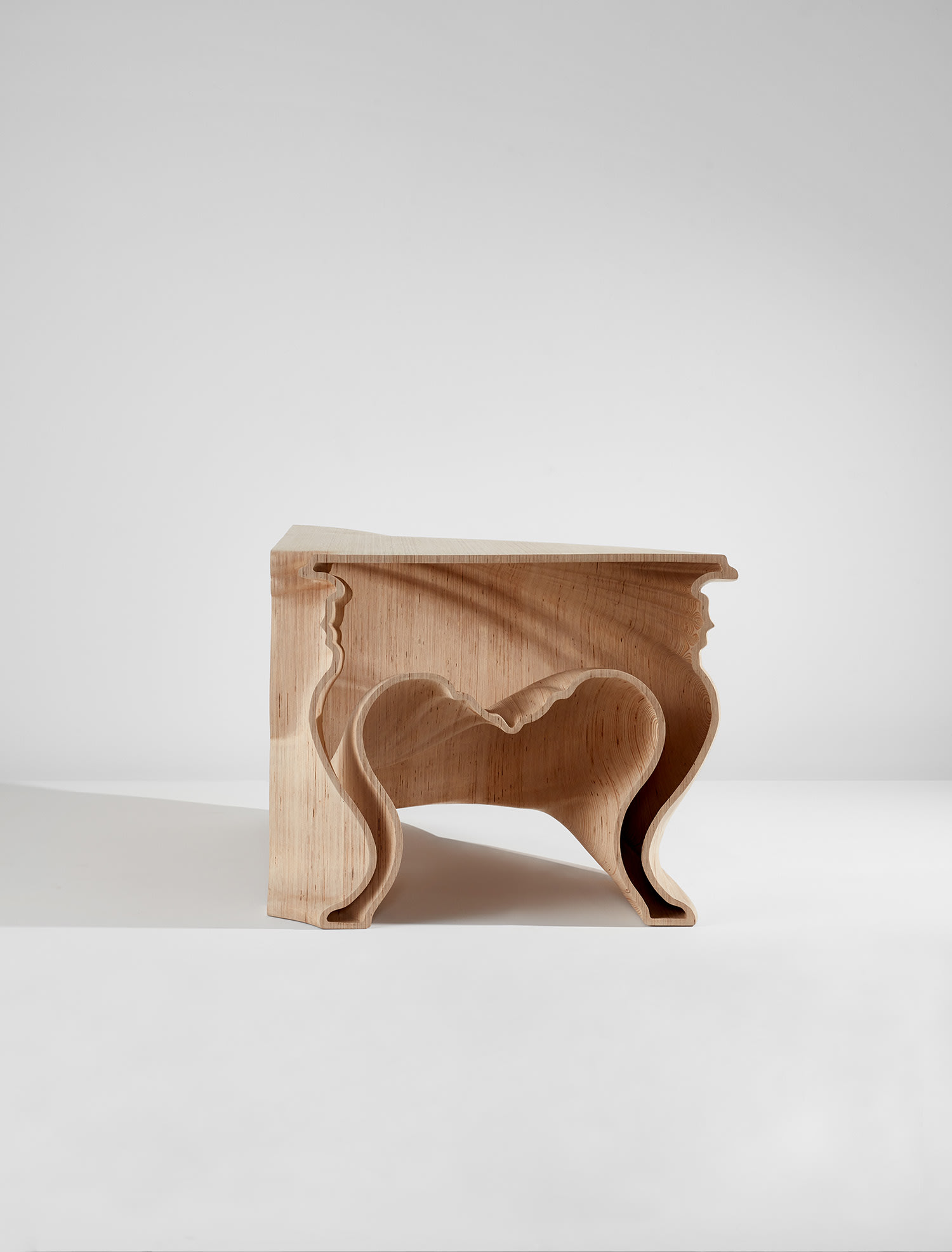
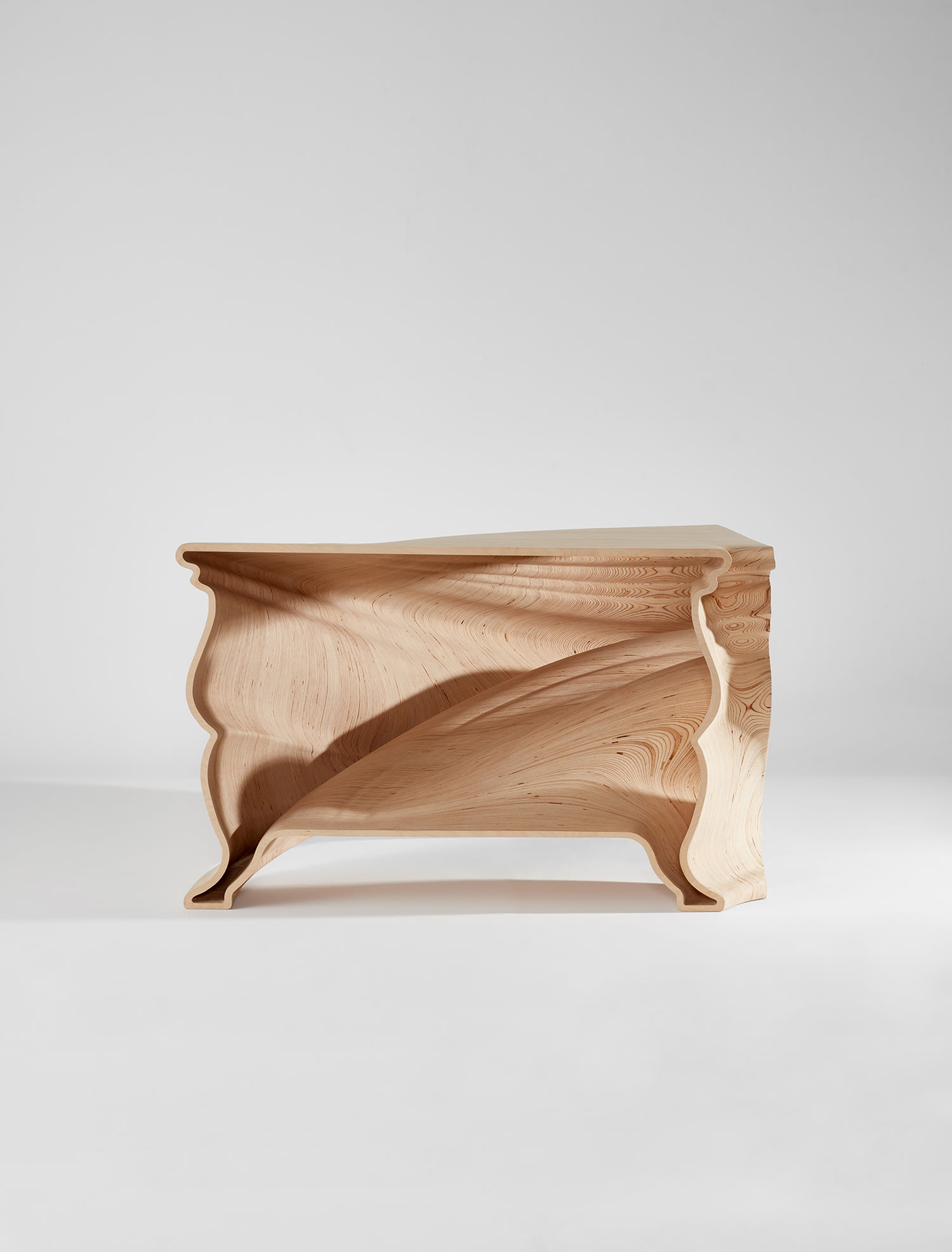
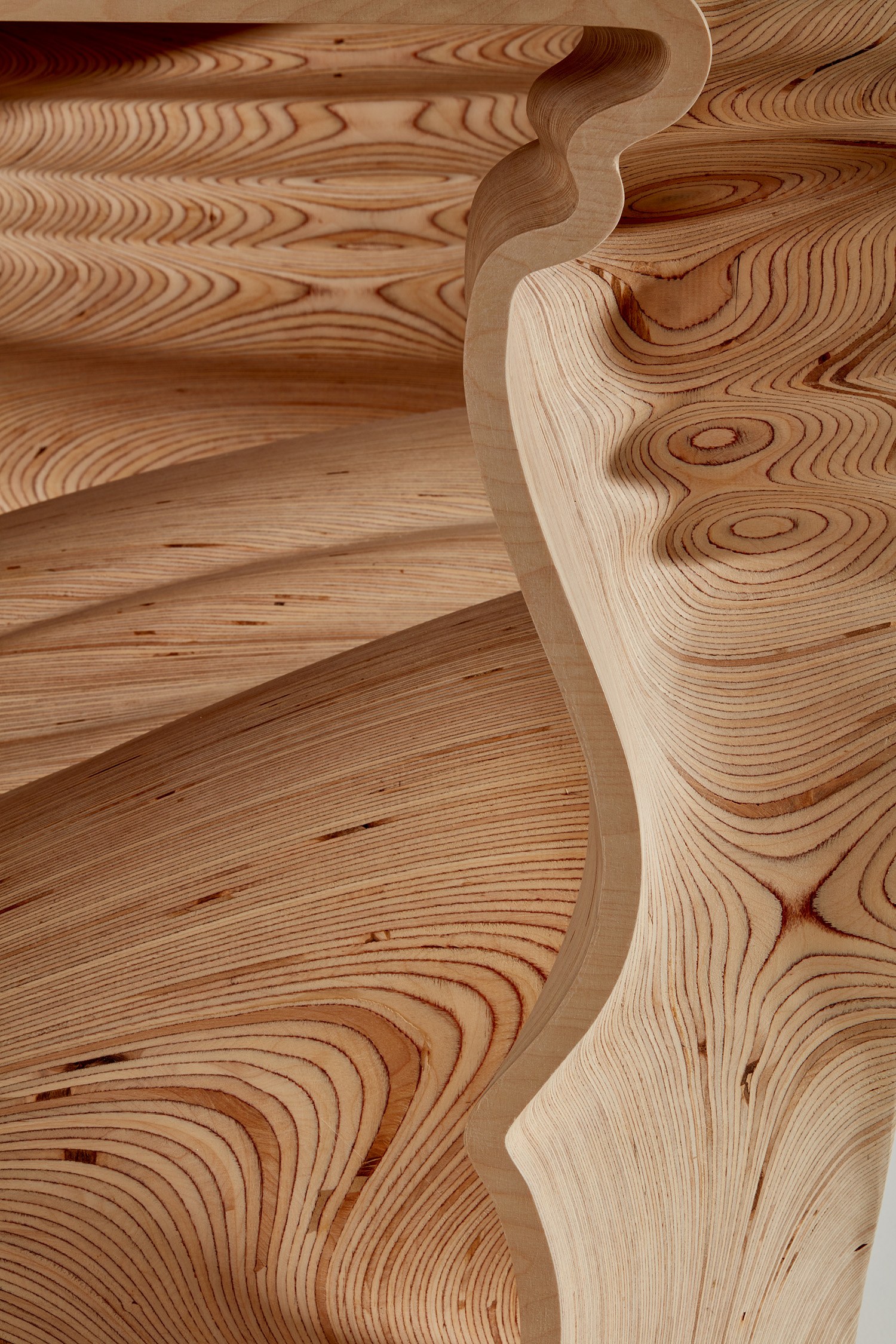
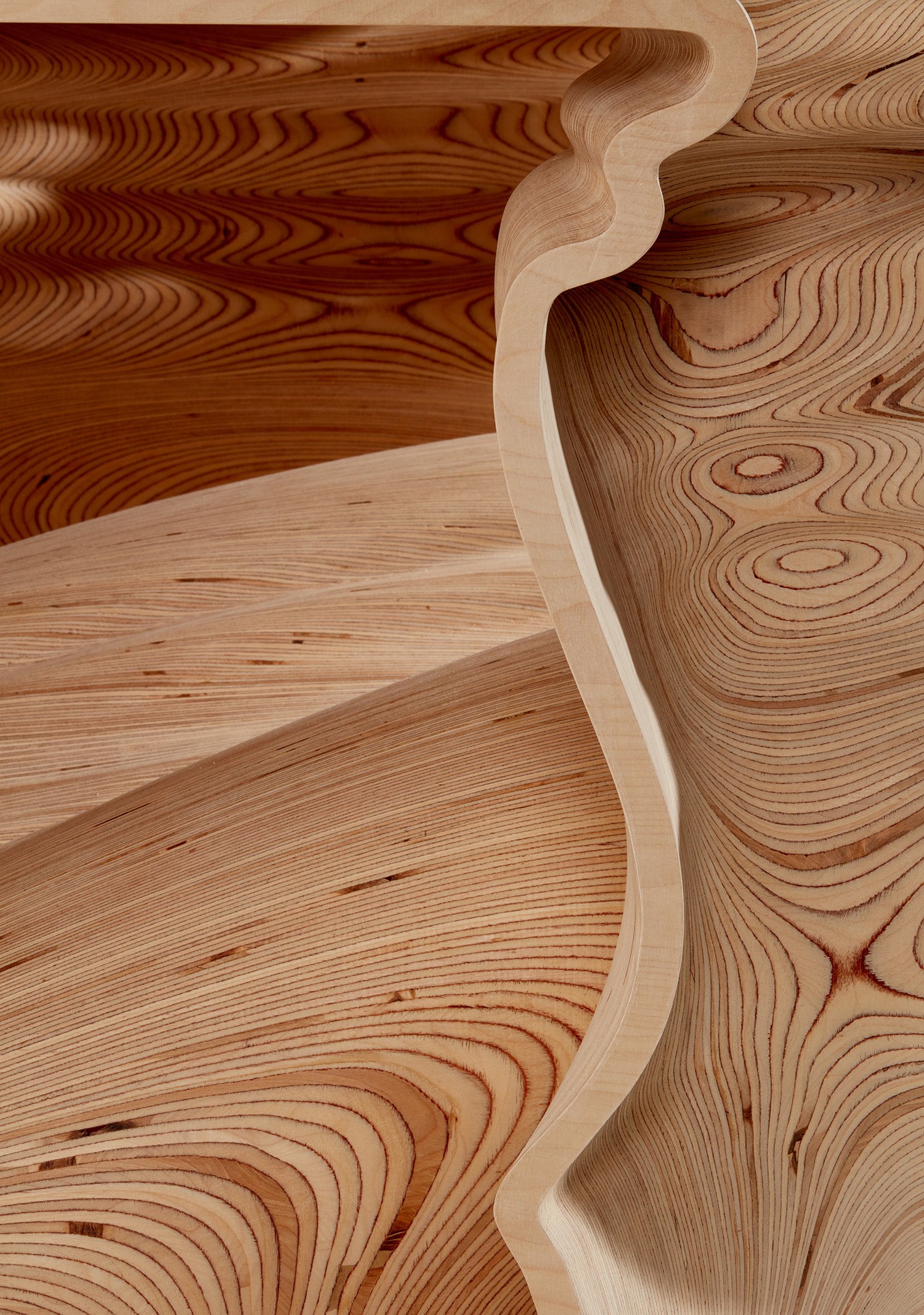






56
Jeroen Verhoeven
"Cinderella" table
2004-2007
CNC-cut birch plywood.
32 x 53 x 40 1/2 in. (81.3 x 134.6 x 102.9 cm)
Artist's proof 2 from the edition of 20 plus 4 artist's proofs and 1 prototype. Underside signed and dated.
Full-Cataloguing
Now one of the most coveted and collected designers of the twenty-first century, Jeroen Verhoeven became an overnight success with the production of the present model table, which he initially began as a student at the Design Academy, Eindhoven. The table’s form is complex—from different vantage points, the table takes on entirely unique shapes. Just as the Cinderella fairytale is a story of transformation, the table transforms based on the viewer’s perspective. To construct the table, Verhoeven began by drawing the silhouettes of a baroque table and a bombé chest, both furniture forms from the seventeenth and eighteenth centuries that he studied in the Stedlijk Museum in Amsterdam. He then used computer software to merge the silhouettes into one three-dimensional form. By combining these two forms, Verhoeven simultaneously injected himself into a centuries-long history of exquisite artistry and craftsmanship while also heralding a new vision for the future of design.
Verhoeven’s interest in history is complicated by his use of plywood. Though the material is humbler than those used by eighteenth-century craftsmen, Verhoeven employed the same attention to detail and craftsmanship. The table consist of 741 layers of plywood that have been machine-cut and meticulously glued together and finished by hand. Discussing the table, the designer has said, “it’s about attention to detail and the possibility to make something unique with a machine that is normally used for mass production.” The Cinderella table’s construction, materials, and form are not the only elements that are about transformation. With this table, Verhoeven presciently transformed contemporary notions of design’s potential and ushered in a new period of contemporary design. This radical potential has been recognized by institutions internationally, as the Cinderella table belongs to the permanent collection of museums such as the Museum of Modern Art, New York, the Victoria and Albert Museum, London, and the Centre Pompidou, Paris.
Verhoeven’s interest in history is complicated by his use of plywood. Though the material is humbler than those used by eighteenth-century craftsmen, Verhoeven employed the same attention to detail and craftsmanship. The table consist of 741 layers of plywood that have been machine-cut and meticulously glued together and finished by hand. Discussing the table, the designer has said, “it’s about attention to detail and the possibility to make something unique with a machine that is normally used for mass production.” The Cinderella table’s construction, materials, and form are not the only elements that are about transformation. With this table, Verhoeven presciently transformed contemporary notions of design’s potential and ushered in a new period of contemporary design. This radical potential has been recognized by institutions internationally, as the Cinderella table belongs to the permanent collection of museums such as the Museum of Modern Art, New York, the Victoria and Albert Museum, London, and the Centre Pompidou, Paris.